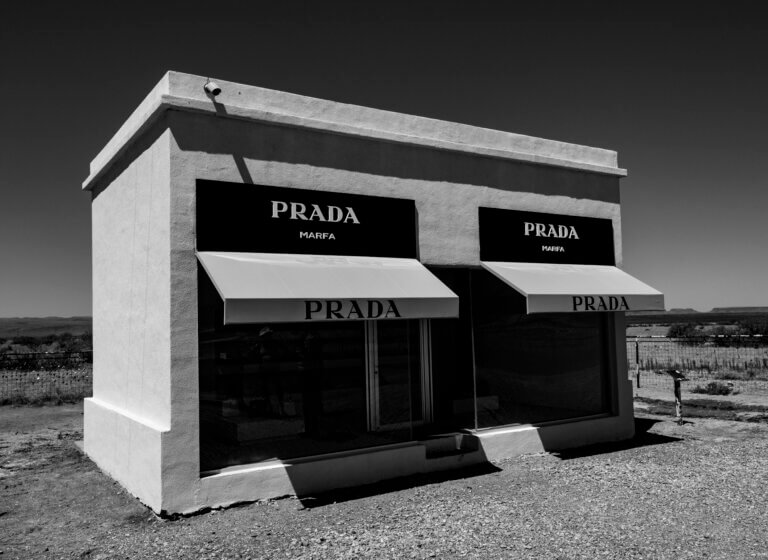Michael Kors was founded in 1981 by designer Michael Kors and has become a renowned global fashion brand, offering a mix of luxury and accessible styles, including ready-to-wear, handbags, footwear, and accessories.
Since its inception, Michael Kors has expanded from a single boutique to over 769 stores worldwide in 2024, with a strong presence in the Americas, Europe, and Asia.
From annual revenue and profits to global store count and regional expansion, here’s a breakdown of everything you’ll find out about on this page:
Table of Contents
Key Michael Kors Stats
- Founded in 1981, Michael Kors has expanded from a single collection to 769 retail stores worldwide by 2024, down from a peak of 1,271 in 2020.
- Revenue in the Americas rose 462.3% from $497.3 million in 2010 to $2.80 billion in 2024.
- Asia revenue grew from $0 in 2010 to $433 million in 2024, a remarkable expansion into the region.
- Royalty and licensing revenue rose 784.8% from $16.5 million in 2008 to $145.8 million in 2017.
- From 2012 to 2017, the number of stores in Asia jumped from 50 to 228, a 356% increase.
Michael Kors Net Sales, Royalty & Licensing Revenue
In 2017, Michael Kors earned $4.35 billion in net sales and $145.8 million in royalty and licensing revenue.
From 2008 to 2017, net sales grew by 1,370%, while royalty and licensing revenue rose 783%.
| Year | Net Sales (USD) | Royalty & Licensing Revenue (USD) |
|---|---|---|
| 2008 | $296.176 million | $16.479 million |
| 2009 | $377.058 million | $20.016 million |
| 2010 | $483.452 million | $24.647 million |
| 2011 | $757.800 million | $45.539 million |
| 2012 | $1.237 billion | $65.154 million |
| 2013 | $2.0947 billion | $87.000 million |
| 2014 | $3.1705 billion | $140.300 million |
| 2015 | $4.1997 billion | $171.800 million |
| 2016 | $4.5388 billion | $173.300 million |
| 2017 | $4.3479 billion | $145.800 million |
Michael Kors Total Revenue
In 2024, Michael Kors reported $3.52 billion in total revenue, a 25.3% decrease from its 2016 peak of $4.71 billion.
Revenue peaked in 2016 at $4.71 billion, representing a 1,407% increase from $312.66 million in 2008.
| Year | Total Revenue |
|---|---|
| 2008 | $312.655 million |
| 2009 | $397.074 million |
| 2010 | $508.099 million |
| 2011 | $803.339 million |
| 2012 | $1.302254 billion |
| 2013 | $2.1817 billion |
| 2014 | $3.3108 billion |
| 2015 | $4.3715 billion |
| 2016 | $4.7121 billion |
| 2017 | $4.4937 billion |
| 2018 | $4.496 billion |
| 2019 | $4.511 billion |
| 2020 | $4.153 billion |
| 2021 | $2.924 billion |
| 2022 | $3.953 billion |
| 2023 | $3.880 billion |
| 2024 | $3.522 billion |
Michael Kors Cost of Goods Sold
In 2017, Michael Kors generated $4.49 billion in total revenue with a COGS of $1.83 billion, meaning 40.8% of revenue went toward producing goods.
Back in 2008, COGS made up 53.1% of total revenue, showing how gross margins improved significantly as the company scaled.
| Year | Cost of Goods Sold (USD) |
|---|---|
| 2008 | $165.947 million |
| 2009 | $208.283 million |
| 2010 | $241.365 million |
| 2011 | $357.274 million |
| 2012 | $549.158 million |
| 2013 | $875.100 million |
| 2014 | $1.2948 billion |
| 2015 | $1.7238 billion |
| 2016 | $1.9149 billion |
| 2017 | $1.8323 billion |
Michael Kors Annual Revenue By Region
From 2010 to 2024, Michael Kors’ Asia revenue grew from $0 to $433 million, marking a massive expansion into the region.
EMEA revenue jumped from $10.8 million in 2010 to a peak of $990.3 million in 2016, before settling at $791 million in 2024, still a 7,224% increase from its 2010 base.
Meanwhile, The Americas peaked in 2016 at $3.51 billion, but have since declined to $2.298 billion in 2024, a 34.5% drop from the peak.
| Year | The Americas | EMEA | Asia |
|---|---|---|---|
| 2010 | $497.3 million | $10.8 million | $0 |
| 2011 | $763.8 million | $38.5 million | $1.0 million (Japan) |
| 2012 | $1.18 billion | $108.8 million | $10.2 million (Japan) |
| 2013 | $1.94 billion | $220.7 million | $22.4 million (Japan) |
| 2014 | $2.77 billion | $500.5 million | $38.5 million (Japan) |
| 2015 | $3.42 billion | $884.7 million | $67.9 million |
| 2016 | $3.51 billion | $990.3 million | $215.2 million |
| 2017 | $3.14 billion | $943.9 million | $409.1 million |
| 2018 | $2.996 billion | $970 million | $530 million |
| 2019 | $3.064 billion | $892 million | $555 million |
| 2020 | $2.822 billion | $821 million | $510 million |
| 2021 | $1.869 billion | $607 million | $448 million |
| 2022 | $2.627 billion | $835 million | $491 million |
| 2023 | $2.616 billion | $819 million | $445 million |
| 2024 | $2.298 billion | $791 million | $433 million |
Michael Kors Income from Operations (Profit Before Tax)
From 2013 to 2024, Michael Kors’ Income from Operations decreased from $1.257 billion to $634 million, a 49.5% decline over the years.
For the year 2024, Michael Kors had an operating margin of 17.9%.
| Year | Income from Operations |
|---|---|
| 2013 | $630.0 million |
| 2014 | $1.0082 billion |
| 2015 | $1.2570 billion |
| 2016 | $1.1751 billion |
| 2017 | $689.9 million |
| 2018 | $975.0 million |
| 2019 | $964.0 million |
| 2020 | $850.0 million |
| 2021 | $595.0 million |
| 2022 | $1.005 billion |
| 2023 | $868.0 million |
| 2024 | $634.0 million |
In 2017, Michael Kors’ operating income was reported as $689.9 million in the 2017 10-K. However, Capri Holdings’ 2019 report listed the operating income as $979 million, reflecting adjustments like impairments and corporate-level expenses that were excluded from the segment’s reporting starting in 2017.
Number Of Stores Worldwide
From 2008 to 2024, Michael Kors expanded its store count significantly, growing from 48 stores in 2008 to 769 stores in 2024, marking an over 1,500% increase in global store presence. However, this is down from their peak of 1,271 stores in 2020 and 2022, representing a 39.6% decrease from their highest point.
| Year | Total Stores |
|---|---|
| 2008 | 48 |
| 2009 | 74 |
| 2010 | 106 |
| 2011 | 166 |
| 2012 | 237 |
| 2013 | 304 |
| 2014 | 405 |
| 2015 | 526 |
| 2016 | 668 |
| 2017 | 827 |
| 2018 | 1,011 |
| 2019 | 1,249 |
| 2020 | 1,271 |
| 2021 | 1,257 |
| 2022 | 1,271 |
| 2023 | 812 |
| 2024 | 769 |
Number Of Stores By Region
From 2017 to 2024, Michael Kors’ store count in the Americas dropped by 26.4%, from a peak of 398 stores down to 293.
EMEA stores decreased by 22.6%, from 201 stores in 2017 to 156 in 2024. Meanwhile, Asia stores remained stable at 320 stores, up from 228 stores in 2017.
Starting from 2019, Capri holdings began reporting Europe under the broader regional label EMEA (Europe, Middle East, and Africa). Which is why it says “Europe / EMEA”
| Year | The Americas | Europe / EMEA | Asia |
|---|---|---|---|
| 2015 | 343 | 133 | 50 |
| 2016 | 390 | 177 | 101 |
| 2017 | 398 | 201 | 228 |
| 2018 | 379 | 198 | 252 |
| 2019 | 390 | 186 | 277 |
| 2020 | 380 | 180 | 279 |
| 2021 | 353 | 176 | 291 |
| 2022 | 334 | 176 | 315 |
| 2023 | 319 | 173 | 320 |
| 2024 | 293 | 156 | 320 |




